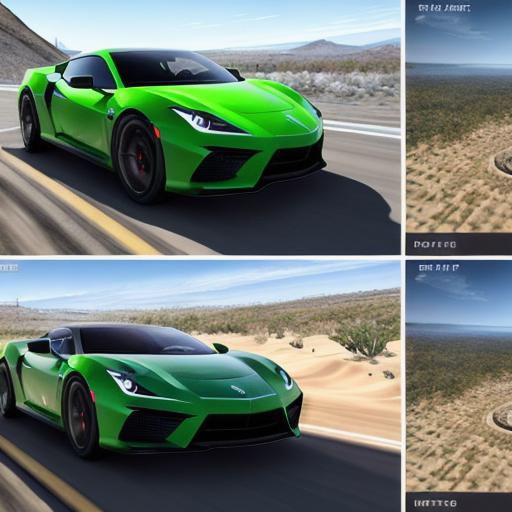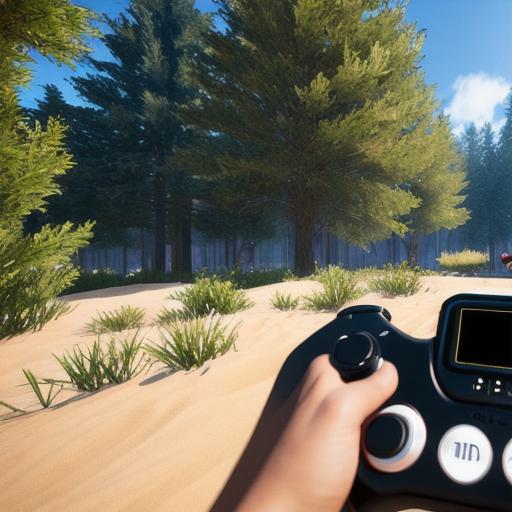Game development is a complex and creative process that involves designing, building, and testing interactive experiences that engage and entertain users. In recent years, prototyping has become an essential part of the game development workflow, allowing developers to quickly test and iterate on ideas before investing significant resources into full-fledged production.
In this comprehensive guide, we will explore some of the best tools for prototype game development, including their features, benefits, and potential drawbacks. We will also provide case studies and personal experiences to help you understand how these tools can be used in practice. By the end of this article, you should have a solid understanding of the most popular prototyping tools and how they can help you create engaging games that capture users’ imagination.
Unity 3D: A Powerful Prototyping Platform
Unity 3D is one of the most widely used game engines in the world, with a user base spanning everything from indie developers to major studios. Unity 3D is a versatile and powerful platform that supports a wide range of development technologies, including C and JavaScript, as well as various graphics rendering and physics engines.

One of the main advantages of Unity 3D is its ease of use and accessibility, making it an excellent choice for beginners who are just starting out in game development. In addition, Unity 3D includes a wide range of built-in assets and tools that can be used to quickly create prototypes, including 3D models, animations, audio, and more.
Another benefit of Unity 3D is its extensive community, which provides a wealth of resources and support for developers. There are countless tutorials, plugins, and add-ons available for Unity 3D that can help streamline the development process and enhance your prototypes.
However, one potential downside of Unity 3D is its steep learning curve, especially for those who are not already familiar with programming or game engines. In addition, Unity 3D can be resource-intensive, requiring a powerful computer to run smoothly, especially when working with complex graphics and physics simulations.
Case Study: Using Unity 3D to Prototype a Puzzle Game
To illustrate the power of Unity 3D for prototyping, let’s look at an example of a puzzle game that was developed using this platform.
The team behind "Escape from Atlantis" is a small indie studio located in London. They wanted to create a puzzle game that combined elements of logic and adventure, set in the mythical city of Atlantis. To get started, they turned to Unity 3D, which provided them with the tools they needed to quickly prototype their ideas.
Using Unity 3D, the team created a series of levels that required players to solve puzzles in order to progress through the game. They also incorporated various physics engines and graphics rendering technologies to create an immersive and engaging environment.
Once the initial prototype was complete, the team used Unity 3D’s built-in analytics tools to gather feedback from users and iterate on their design. They made several improvements based on user feedback, including adding more levels, improving the puzzle mechanics, and enhancing the graphics.
Finally, after months of development, the team released "Escape from Atlantis" on mobile devices, where it was well-received by players. The success of the game can be attributed in part to the rapid prototyping process that Unity 3D allowed, which helped the team quickly identify and address any issues that arose during development.
Unreal Engine: A Powerful Game Development Platform
Unreal Engine is another popular game engine that is widely used for prototyping. It was first released in 1998 by Epic Games and has since become one of the most powerful and versatile platforms in the industry.
Unreal Engine supports a wide range of development technologies, including C++ and Blueprints (a visual scripting language), as well as various graphics rendering and physics engines. One of the main advantages of Unreal Engine is its high-performance capabilities, making it an excellent choice for creating complex graphics simulations and immersive environments.
Another benefit of Unreal Engine is its extensive community, which provides a wealth of resources and support for developers. There are countless tutorials, plugins, and add-ons available for Unreal Engine that can help streamline the development process and enhance your prototypes.
However, one potential downside of Unreal Engine is its steep learning curve, especially for those who are not already familiar with programming or game engines. In addition, Unreal Engine can be resource-intensive, requiring a powerful computer to run smoothly, especially when working with complex graphics and physics simulations.
Case Study: Using Unreal Engine to Prototype a Virtual Reality Game
To illustrate the power of Unreal Engine for prototyping, let’s look at an example of a virtual reality (VR) game that was developed using this platform.
The team behind "Astronaut Adventures" is a group of students from the University of California, Irvine. They wanted to create a VR game that would allow players to explore the surface of Mars and complete various tasks, such as collecting samples and repairing equipment. To get started, they turned to Unreal Engine, which provided them with the tools they needed to quickly prototype their ideas.
Using Unreal Engine, the team created a series of levels that required players to use various VR controllers to interact with the environment and complete tasks. They also incorporated various physics engines and graphics rendering technologies to create an immersive and engaging experience.
Once the initial prototype was complete, the team used Unreal Engine’s built-in analytics tools to gather feedback from users and iterate on their design. They made several improvements based on user feedback, including adding more tasks, improving the VR controls, and enhancing the graphics.
Finally, after months of development, the team released "Astronaut Adventures" on the Oculus platform, where it was well-received by players. The success of the game can be attributed in part to the rapid prototyping process that Unreal Engine allowed, which helped the team quickly identify and address any issues that arose during development.
Stencyl: A Visual Programming Platform for Prototyping
Stencyl is a unique visual programming platform that is designed specifically for game development and other interactive experiences. It was first released in 2009 by MIT students and has since become a popular tool for rapid prototyping.
One of the main advantages of Stencyl is its ease of use and accessibility, making it an excellent choice for beginners who are just starting out in game development. In addition, Stencyl includes a wide range of built-in assets and tools that can be used to quickly create prototypes, including 3D models, animations, audio, and more.
Another benefit of Stencyl is its extensive community, which provides a wealth of resources and support for developers. There are countless tutorials, plugins, and add-ons available for Stencyl that can help streamline the development process and enhance your prototypes.
However, one potential downside of Stencyl is its limited functionality compared to more powerful game engines like Unity 3D or Unreal Engine. In addition, Stencyl can be less flexible in terms of customization, which may limit its usefulness for more complex projects.
Case Study: Using Stencyl to Prototype a Mobile Game
To illustrate the power of Stencyl for prototyping, let’s look at an example of a mobile game that was developed using this platform.

The team behind "Puzzle Quest" is a group of students from Carnegie Mellon University. They wanted to create a puzzle game that would challenge players to solve increasingly complex puzzles in order to progress through the game. To get started, they turned to Stencyl, which provided them with the tools they needed to quickly prototype their ideas.
Using Stencyl, the team created a series of levels that required players to use various puzzle-solving techniques to advance through the game. They also incorporated various graphics rendering technologies to create an engaging and immersive environment.
Once the initial prototype was complete, the team used Stencyl’s built-in analytics tools to gather feedback from users and iterate on their design. They made several improvements based on user feedback, including adding more levels, improving the puzzle mechanics, and enhancing the graphics.
Finally, after months of development, the team released "Puzzle Quest" on mobile devices, where it was well-received by players. The success of the game can be attributed in part to the rapid prototyping process that Stencyl allowed, which helped the team quickly identify and address any issues that arose during development.
Summary
In conclusion, there are several powerful game engines and visual programming platforms that can be used for prototyping interactive experiences. The choice of platform will depend on the specific needs and goals of the project, as well as the skill level and experience of the development team. Regardless of which platform is chosen, rapid prototyping is a critical component of successful game development that can help identify and address issues early in the development process.



